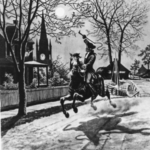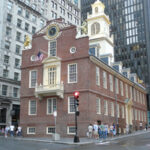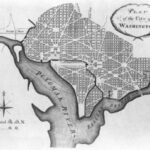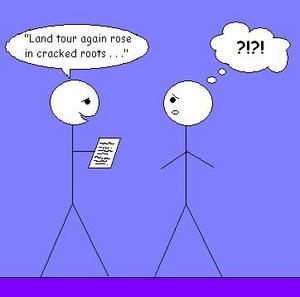Boston is known as one of the most expensive cities in America and for good reason. But there is still a lot a traveler can do in Boston without spending a single dollar.
1. U.S.S. Constitution In 1794, George Washington signed a bill that commissioned the U.S. Navy to construct six frigate class ships, the first ships to be newly built by the new nation. Of the original six, only one still exists, the U.S.S. Constitution, built in Boston and today docked at the Charlestown Navy Yard in Boston Harbor. Set afloat in October, 1787, the Constitution is the oldest commissioned warship afloat in the world today, and is a must see for any visitor to Boston. The ship itself earned its famous nickname “Old Ironsides” during the War of 1812 because its wooden hulls were able to repel enemy canon balls as if the ship’s sides were made of iron. Please know that ship is still a U.S. Navy vessel, and all the security you’d expect to see when visiting an aircraft carrier are in operation here. The sailors themselves do the security, and they are mostly affable and friendly and try to make the security procedures as harmless as possible.
2. Bunker Hill Monument Within eyesight of the ship Constitution is a 221′ obelisk built to honor those volunteer soldiers who fought and died during the Battle of Bunker Hill, which took place on June 17, 1775. 1,054 British soldiers crossed the harbor, landing approximately where the Constitution is presently docked, and attacked the earthen fortifications built by the colonials at the top of the hill (where the monument stands today). The British won the day, technically speaking, after they eventually drove the American colonists off the hill, but the British paid a dear price, suffering more than 500 casualties. The British retreated soon thereafter, ceding the hill back to the colonists after determining that hill no longer held any strategic value. The monument itself is open to the public, and inside you’ll find a narrow spiral staircase, 343 steps, at the top of which, you’ll find a small observatory, which provides really special views of Boston.
3. Old North Church One of the most historic churches in America, the Old North of Boston became famous as a result of the role that the church played in what we now know as the Midnight Ride of Paul Revere. In 1775, the steeple of the Old North towered over the colonial town, serving as a beacon for ship captains navigating the Boston Harbor. By April, 1775, the majority of the colonists in Massachusetts were in open revolt against the Crown of England, and British troops had been occupying the town of Boston for more than a year. Paul Revere devised the now famous plan to use the steeple of the Old North Church to signal the people on the opposite side of the harbor in regards to British troop movements. “One if by Land, Two if by Sea” was the signal, and on the night of April 18th, 1775, the British were moving by sea on their way to the Massachusetts’ towns of Lexington and Concord. That morning, the “shot heard round the world” was fired and the American Revolutionary War had begun. The church’s docents give free talks regarding the history of the church.
4. Massachusetts State House Opened in 1796, it’s certainly one of the most historic and most beautiful state capitol buildings in the United States. The centerpiece of red brick with the gold dome is the original part, designed by the famous American architect Charles Bulfinch, the man who built post-Revolution Boston. The white granite wings were added in 1918, but more importantly, in the rear there is a yellow brick extension which opened in 1896. Inside, there are historic portraits of every governor who has governed Massachusetts since 1620, statues and sculptures celebrating Massachusetts’s contribution to democracy, historic paintings depicting the pivotal moments of the commonwealth’s history, and of course, the Hall of Flags, which displays historic flags from Massachusetts’ past. The building is open to the public, but because it’s an active state government building, public access is subject to security measures.
5. Boston Public Library Boston’s Public Library system is the first free-lending library system in the United States, and this building has served as the city’s main branch since it opened in 1895. Designed by Charles McKim, it designates a clear architectural break with it’s Victorian neighbors. It was a new building, for a new century, built in a style that is both Neo-Classical and Neo-Renaissance. Please go inside! You’ll be greeted by a lovely staircase protected by sculptural lions. At the top of the stairs, you will find Bates Hall, one of the most beautiful library reading rooms in the world. If you continue up the stairs, you’ll find the famous John Singer-Sargeant mural “Triumph of Religion.”
6. Faneuill Hall Originally the town hall, or what we would today call City Hall, Faneuill Hall was the seat of Boston’s town government for many years. The original building, built in 1747 was named for the Boston merchant Peter Faneuill, who financed the construction. It was ultimately destroyed by fired and replaced by a larger structure. The building we see today, is an enlargement of that second building, designed by Charles Bulfinch and opened in 1806. The first floor is and has always been a market place. Originally, one might find fresh meat and vegetables for sale, but today’s tourists are more likely to find t-shirts or books or beverages to go. The real jewel, the actual meeting hall is upstairs. Please realize the entrance to the hall faces the adjacent market place and not the street.; it’s the big heavy door in the middle beneath the building’s tower. Open the door, there’s a large staircase right in front of you. At the top of the stairs, there’s another door, beyond that, that’s the historic hall. Rangers from the U.S. Park Service give regularly scheduled lectures regarding the history of the building.
7. Public Garden The Garden is essentially an extension of the Boston Common, the 45-acre park in front of the State House. The Public Garden, 25 acres in size, was built upon landfill in 1857 and was meant to represent the more genteel side of Boston society. Today, it’s a lovely garden sanctuary within a busy and crowded city. Technically, an open-air botanical garden, it hosts hundreds of different varieties of trees and plant-life, as well as the world famous Swan Boats, a 19th Century concession consisting of wooden paddle boats and adorned with large acrylic swans. The Garden is a popular place for wedding photos, joggers, and brown-baggers. At the west entrance, there is the famous equestrian statue of George Washington by Thomas Ball, which dates to 1869.
8. Historic Burial Grounds There are three 17th century burial grounds in the center of Boston, and they can be a surprising treat. True, revolutionary heroes such as Paul Revere, Samuel Adams, and John Hancock are buried here, but their grave markers are not original, and truth be told, they are not very interesting. No, the old slate stones engraved with the Puritan iconography really steals the show. The skulls, crossbones, hourglasses, dancing skeletons carved into the remarkably well-preserved slate stones are unique to the New England region. You’ll also find that many of the epitaphs easily readable and their contents quite surprising.
9. Harvard Yard The historic campus of Harvard University, founded in 1636, is a short subway ride from downtown Boston. Located on the Red Line, the stop is called Harvard. Massachusetts Hall is the oldest building on the campus, dating to 1718. Next to it is Harvard Hall, dating to 1754, it is the site of the very first college building at Harvard. At the opposite side of the yard is University Hall, designed by Charles Bulfinch. In front of it is the famous statue of John Harvard, the philanthropist for whom the university is named. Be sure to get your photo taken with the statue, and please remember to touch Harvard’s golden left shoe; it is said to give you good luck.
10. Freedom Trial Created in 1958 as way to help tourists navigate the winding streets of historic Boston, the Freedom Trial is a red brick line that runs along the sidewalks between the Boston Common and the Bunker Hill Monument. It covers 2.5 miles, and there are 16 officially designated historic sites along the trail. U. S. Park Rangers give free regularly scheduled walking tours of the trail that begin at their Visitor Information Center located next to the Old State House on State Street





